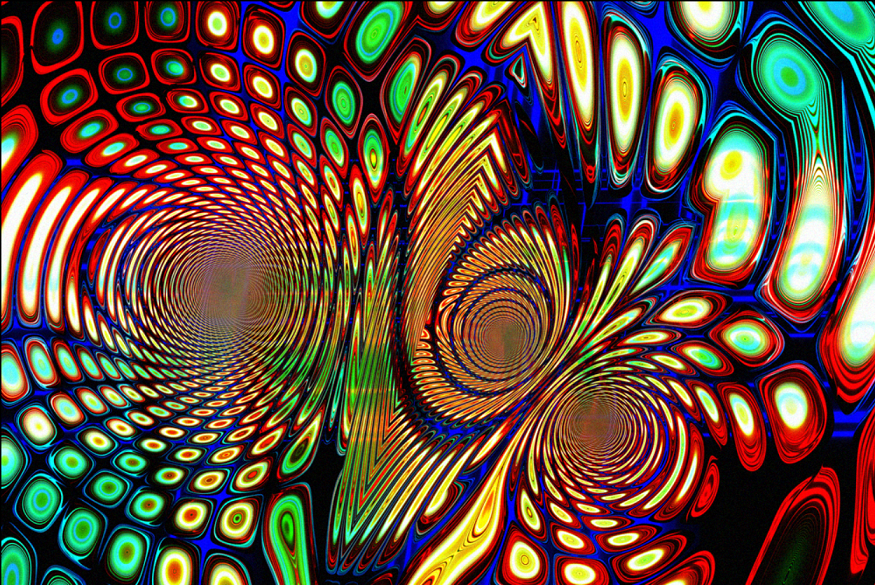Edition: October 30th, 2021
Curated by the Knowledge Team of ICS Career GPS

- Excerpts from article by Eugen Lindwurm, published on Towards Data Science
Although it has its roots in the 1950s, generative art gained traction with the technological advances of the last decades. Among hobby artists, generative art is, perhaps, of particular interest to creative-minded hackers who want to express themselves artistically in a structured way or just want to create pleasant imagery, using the skills they excel at.
Generative art is a niche of the visual arts that makes use of an autonomous system, typically defined through code, to generate pieces of art.
However, there are some aspects of generative art that can be off-putting. Here, we will go through the differences in the process of creating generative art and more traditional art.
There are two criteria for choosing an artistic medium:
- Does it allow you to create what you want to create?
- Is it fun for you to use?
So let’s get right into the ups and downs of creating generative art!
1. Coding skills needed
- If you don’t know how to code you can either learn the basics or try to follow the processing tutorials.
- However, be warned that you’ll be off to a slow start in either case.
2. You can’t sketch your piece beforehand
- One of the big cons for many is that you can’t really sketch out your piece before getting into the nitty-gritty of actually programming.
- Of course, you can jot down some ideas on paper and play around with them, but due to the amount of complexity and randomness you’re probably going to pack into your artwork, it will probably not at all resemble the final piece.
3. There’s more room for exploration later on
- The exploration ability missing in the early stages of conception and sketching comes in later in the generative process.
- Since your artwork is defined by code and you can change and rerun it at any time, it becomes very easy to make changes — even large ones — later on, and to try multiple versions.
- You want to see whether your abstract trees would look better with purple rhombs instead of green ovals as the basis of their foliage? Nothing easier than that!
4. Mostly confined to the abstract
- Since we’re talking about trees already: generative art is usually confined to abstract art. Many artists are happy with the abstract and if you are among them, generative art might be just for you.
- You can try to get around this by using generative machine learning models, but without them, generative art is likely to fail at representing the real world, simply because the real world is too complex and varied to be captured by a reasonable amount of code. (This is also the reason why image recognition didn’t work well before deep learning.)
5. You can develop and reuse tools
- This one is a mixed bag. It can be fun and challenging to develop your own tools (shaders, geometric objects, subdivision algorithms…) and people who code for fun would appreciate developing tools just for the heck of it. Also, it is really rewarding to reuse the tools you created in subsequent pieces and it definitely enhances your process.
- On the downside, the need to develop or find tools that go beyond the basics can be a frustrating experience if you just want to get on with creating what you had in mind.
6. There’s complexity, randomness and surprise
- This is where generative art shines. Through programming, we can in a fraction of a second create patterns of a complexity that would be unthinkable to create by hand. Just look at fractals (complex, never-ending patterns)!
- What’s best about it is that you can never be certain about the outcome, and more often than not, you will be surprised. (On top of the surprise arising from randomness, your own coding mistakes can produce interesting results.)
- A downside of using randomness — and for many generative artists it is an irreplaceable staple — is the loss of total control. You won’t be able to precisely define your artwork.
7. There will be a delay between your work and the result
- This is perhaps the biggest downturn for me: there is always a delay between your work and the result. This aspect is not a limitation on what you can create, but it influences a lot how it feels to create.
- When you paint a picture using a more traditional medium you get immediate feedback. As soon as your pencil touches the paper, you see what is happening, you know where you’re going, and that makes the process in itself enjoyable and sometimes almost meditative.
- If you program your artwork you will only ever see the result once you implemented the change and ran the code.
If you still don’t know whether generative art is for you or not, just try it!
…
(Disclaimer: The opinions expressed in the article mentioned above are those of the author(s). They do not purport to reflect the opinions or views of ICS Career GPS or its staff.)



